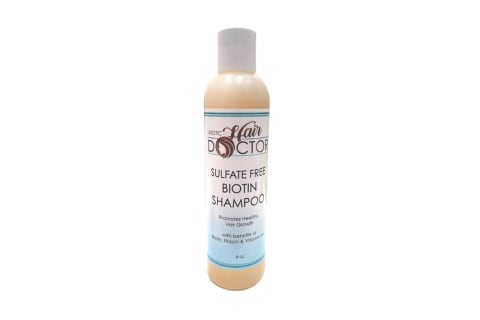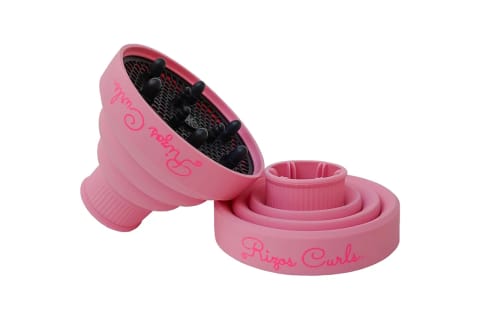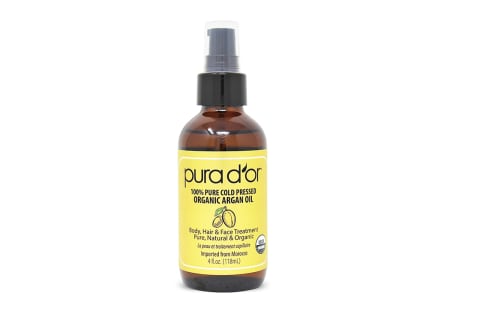And for people that fall into the 3A category, it can require a bit of trial and error to find the right products that give you bouncy, healthy curls. Thankfully, there are plenty of pioneering naturals who’ve come before you. And because of their willingness to test and share their experiences, we can give you the rundown on what you need to know to bring out the best in your hair. Type 3A hair is just one of 10 hair types outlined by celebrity hairstylist Andre Walker. Remember how we mentioned that once upon a time people only considered three hair types? Well, thanks to Mr. Walker, we’ve updated that outdated concept into a more comprehensive system with four hair types. General textures are categorized from one to four and then types two through four are broken down into three additional subtypes. If you have type 1 hair, then your texture is straight, and no additional subtypes are included. Type two is reserved for curly hair and is broken down further into 2A, 2B, and 2C. Type three is for curly hair with that stereotypical corkscrew curl and is also divided into three subtypes, including this one as well as type 3B and 3C. And type four is for coily hair (also referred to as kinky-curly), where you’ll have type 4A, 4B, and 4C. Type 3A hair is the loosest of the general type 3 curl pattern and often looks like a very soft curl. The curl diameter is larger and can be easily mimicked on straight, wavy, and kinky-coily hair with a good curl set. Typically, 3A heads tend to have more shine than sheen to their hair and may have more of an S-curl than a corkscrew. Unlike type fours, 3A hair doesn’t always require manipulation to create a defined curl pattern. And while frizz and dryness are a common concern (which is true of all type 3s), creating definition usually isn’t an issue. However, as with all wavy, curly, and kinky-coily hair types, 3As will usually have to pay attention to moisture retention to prevent frizz and dryness. And similarly, you may find that certain manipulation methods are a nuisance or that a certain product leaves your hair feeling sticky or gross. So for people who are just starting to embrace their natural curls, understand that trial and error is the name of the game. Don’t be afraid to experiment. And if need be, invest in a few tangle-free hair ties and silk scrunchies for those days that an experiment didn’t turn out quite as you expected. Everyone’s body chemistry is different, so don’t be surprised if someone else’s holy grail product that’s lauded as a must-have for 3A heads doesn’t curl your toes. Porosity is measured in three levels: high, medium, and low. High porosity means that the hair shafts on each cuticle are completely open so moisture slips out easily. Medium porosity hair is considered normal with regularly aligned cuticles that help to retain sufficient moisture. And low porosity hair is similar to high porosity in that retaining moisture is also difficult because the cuticles are aligned too tightly. Fortunately, checking your porosity level is easy to do, and all you need is this quick test, a strand of hair, and a glass of water. Instead, take your time, use a wide-tooth comb or a nylon bristle brush and work with intention. But for best results, even using a light spritz of water can help to loosen tangles and minimize resistance. For particularly stubborn tangles, invest in a good detangler or create a DIY one by combining a 4:1 solution of water with conditioner. This will give you extra slip and make your next detangling session much easier. So incorporating moisturizing products into your hair care routine is going to be important. And as a bonus, focusing on moisture can make it easier for you to enhance your curl definition. Dry thirsty curls are more likely to struggle with frizz. While humectant-rich products are a great go-to for thirsty curls, don’t be surprised if you have to experiment a bit. And don’t forget that water is a natural moisturizer. You can lock in moisture by sealing with a lightweight oil. Evelyn Metellus, a stylist and founder of The Hair Doctor, shares that people with 3A hair should part “their hair into four sections, then part each section into two sections. Do a finger-roll with each section and use a bobby pin to hold the curl in place overnight. Carefully take out the bobby pin in the morning, and use the right product to preserve the curl.” Gwen Jimmere, the founder and CEO of Naturalicious, always tells her clients that dark green vegetables are a staple for a hair-focused diet: “These veggies are full of iron, vitamins, and folic acid that help prevent breakage and make your hair so much more resistant to split ends.” Heat damage manifests as sections of hair that don’t return to their natural texture on your next wash day. To avoid this, keep heat styling to a minimum. And when you do pick up a hot tool, never put it on your hair until you’ve properly covered your hair with a heat protectant. Likewise, set your styling tools to the lowest heat setting possible that still allows you to achieve your styling goals in a single pass. However, you’ll need to experiment and decide if you want a full wash day complete with shampoo and conditioner or if your curls respond better to gentle co-washes. The answer to this question will depend on preference as well as how much product or dirt buildup you experience between wash days. Exotic Sulfate-free Biotin Shampoo, The Hair Doctor ($12) Pink Collapsible Diffuser, Rizos Curls ($19.99) Miracle Shake Leave In Detangler Spray, Kaleidoscope ($19.99) 100% Pure Cold Pressed Organic Argan Oil, Pura D’or’s ($14.99) Looser curl patterns plus a lower reliance on styling techniques means that this hair type can often benefit from the popular wash-’n’-go technique that essentially allows for the natural hair pattern to emerge through a relatively low manipulation process. Similarly, a quick blow dry with a round brush or air-drying sessions followed by a flat iron can offer a quick switch to straight hair. However, as with other textured hair types, concerns over heat damage mean that you should never use a hot tool without first prepping your hair with a good heat protectant. Meanwhile, 3A heads looking for a change from the routine can still rock protective styles. However, adhering strictly to the four- to six-week timeline is critical to avoid damage from traction alopecia, or long-term product or dirt buildup.







